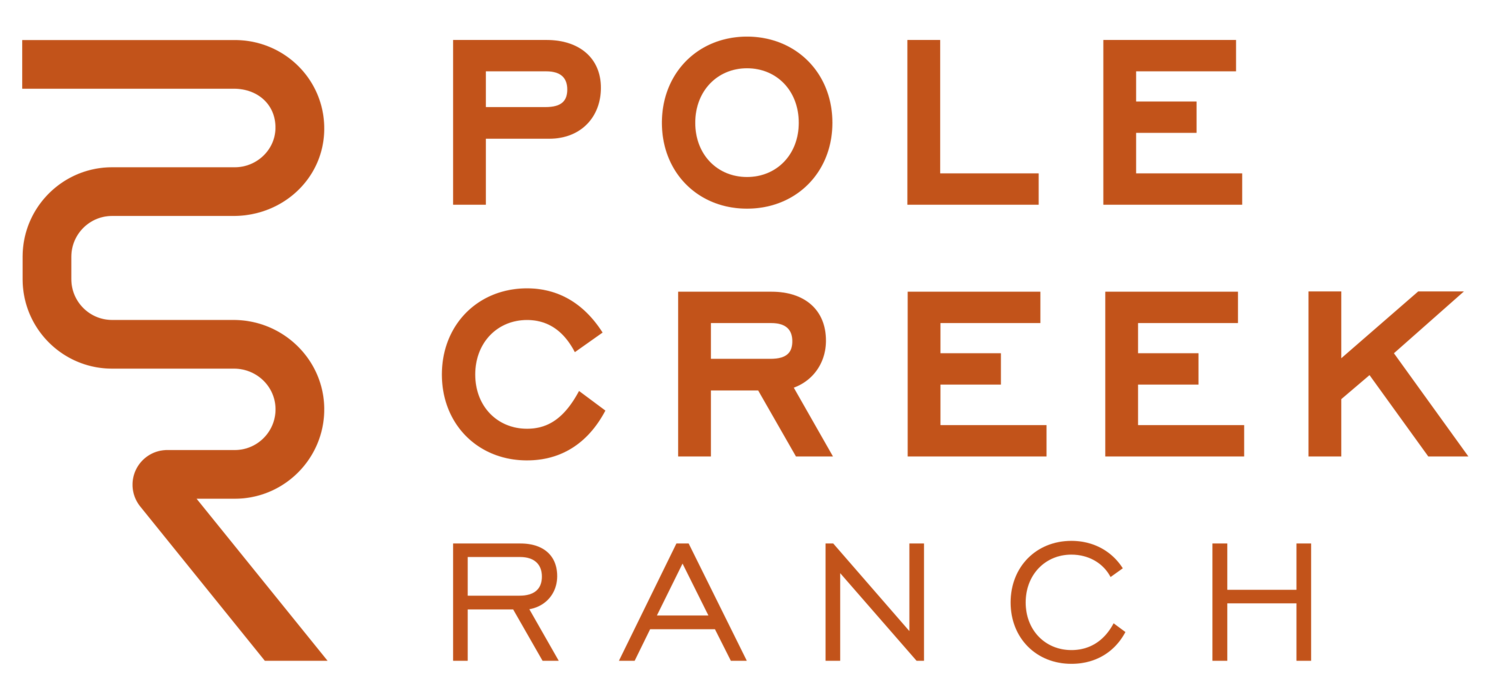Compassion makes sense…if not dollars
Our mission at Pole Creek Ranch is to create healthy land, healthy bodies, and healthy communities. Those bodies that we intend to keep healthy are not only our own and those of our customers, but those of our animals as well. Putting the health of our animals first is often expensive and time-consuming, but well worth doing.
Perhaps the most obvious and visible example is during weaning. Weaning is the process of separating calves from their mothers, and converting their diets from one of roughly equal parts forage and milk, to 100% forage. This process happens at about 7 months of age, when the calves become so large as to present a danger to the cow physically and physiologically by continuing to nurse.
There are two processes happening at the same time when we wean calves. We are training calves to forage for all of their nutrition as well as to be independent of their mothers. Cattle are social animals, and mothers spend a good amount of time grooming and comforting their calves.
Most cattle operations wean by taking calves away from their mothers and putting them into a different pen. This causes both the cow and the calf will "bawl," a kind of distress vocalizing, nearly constantly for over a week. This is a result of not being able to nurse (and for the cow, having a sore udder from not being nursed) as well as being separated from their mothers (and for the cow, thinking that they have lost their calf). Inflammation of the vocal cords often develops and can easily escalate into pneumonia or other respiratory disease.
What’s more, most cattle operations wean and vaccinate their calves all at once. This is one of the most dangerous periods in a calf's life as they are hit with the one-two-punch of weaning stress and vaccination induced fever. To combat disease loss, most operations will feed their calves low levels of antibiotics to keep them healthy. We all know that extended low levels of prophylactic antibiotics are how antibiotic-resistant superbugs are created. Not good!
We do things differently at Pole Creek Ranch. You'll notice in the photo above, that the calf has a yellow "clip" attached to its nose. This is not a piercing, but rather something like a clip-on-tie. The flat paddle hangs down and blocks the calf from reaching the cow's udder, teaching the calves to go without milk while still being groomed and comforted by their mothers, cutting distress vocalization by more than 90%. Nose clips also separate the weaning process into two distinct and therefore less stressful steps; learning to forage first, and then when calves are more independent, to go without their mothers’ care. Reducing vocalization and stress in this way significantly reduces the risk of disease that we would have to treat with antibiotics.
Why doesn't every cattle operation do this? Because it is labor intensive, and therefore expensive, especially when compared with prophylactic antibiotic use. This is one of dozens of ways we go out of our way to reduce antibiotic use while still keeping our animals healthy. It is also why we require a slightly higher price for our beef than you will find in the grocery store. The margins on our beef products are tighter than traditional operations, but we believe in putting compassion for our animals' health first. As with everything in modern life, we vote our values with our dollars, and buying Pole Creek Ranch Natural Beef is a vote for humane and responsible beef production.
Riley Avery,
Livestock Manager, Pole Creek Ranch
Riley is the President of the Western States Red Angus Association and manager of Pole Creek Ranch Natural Beef. As a 27 year veteran of the cattle industry, he is passionate about sustainable, natural beef production and agricultural education and outreach.


